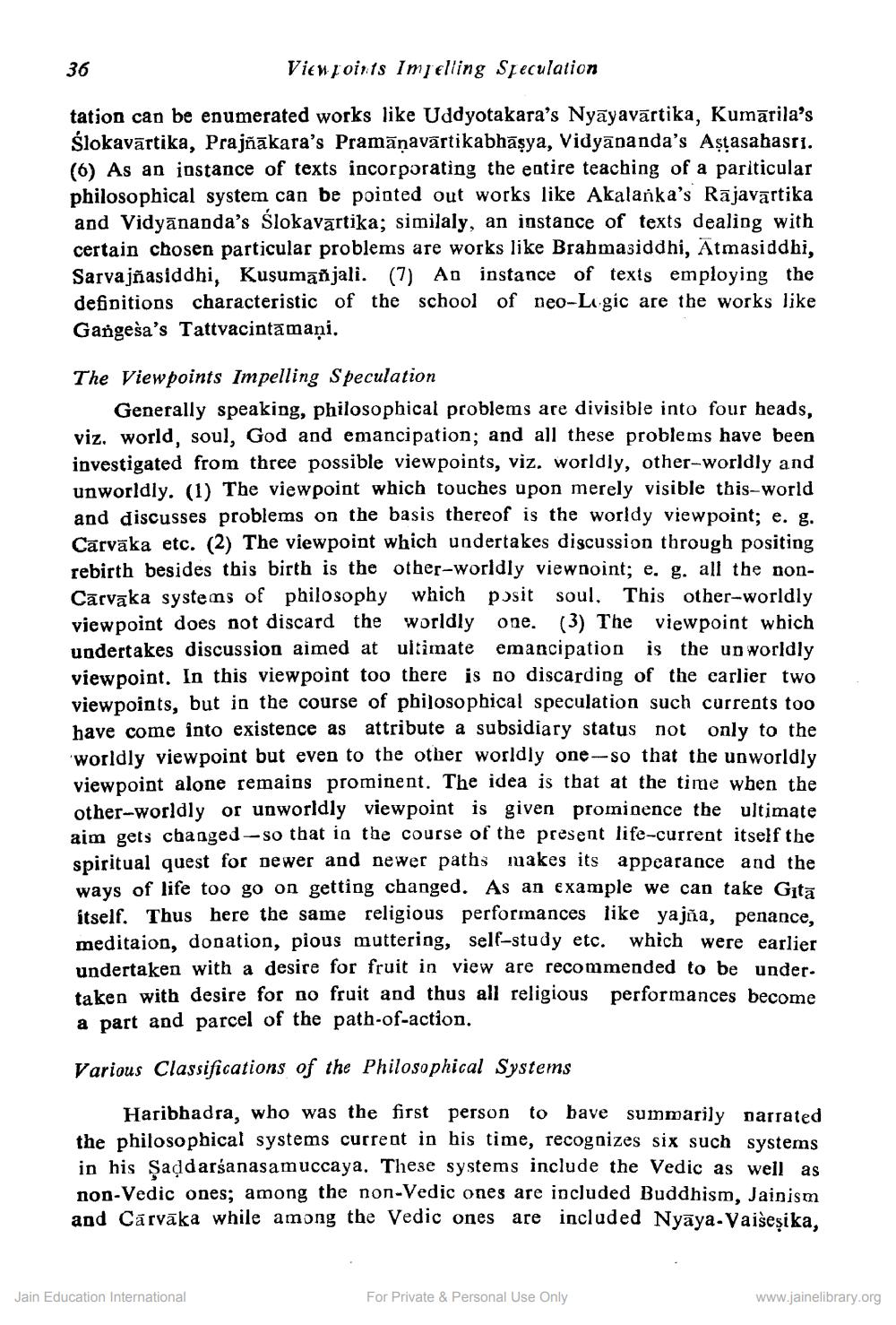________________
36
View points Impelling Speculation
tation can be enumerated works like Uddyotakara's Nyāyavārtika, Kumārila's Slokavārtika, Prajñākara's Pramāņavārtikabhāşya, Vidyānanda's Astasahasri. (6) As an instance of texts incorporating the entire teaching of a pariticular philosophical system can be pointed out works like Akalanka's Rājavārtika and Vidyānanda's Slokavārtika; similaly, an instance of texts dealing with certain chosen particular problems are works like Brahmasiddhi, Atmasiddhi, Sarvajñasiddhi, Kusumāñjali. (7) An instance of texts employing the definitions characteristic of the school of neo-Ligic are the works like Gangesa's Tattvacintamani.
The View points Impelling Speculation
Generally speaking, philosophical problems are divisible into four heads. viz. world, soul, God and emancipation; and all these problems have been investigated from three possible viewpoints, viz. worldly, other-worldly and unworldly. (1) The viewpoint which touches upon merely visible this-world and discusses problems on the basis thereof is the worldy viewpoint; e. g. Cārvāka etc. (2) The viewpoint which undertakes discussion through positing rebirth besides this birth is the other-worldly viewnoint; e. g. all the nonCārvāka systems of philosophy which pusit soul. This other-worldly viewpoint does not discard the worldly one. (3) The viewpoint which undertakes discussion aimed at ultimate emancipation is the up worldly viewpoint. In this viewpoint too there is no discarding of the earlier two viewpoints, but in the course of philosophical speculation such currents too have come into existence as attribute a subsidiary status not only to the worldly viewpoint but even to the other worldly one---so that the unworldly viewpoint alone remains prominent. The idea is that at the time when the other-worldly or unworldly viewpoint is given prominence the ultimate aim gets changed - so that in the course of the present life-current itself the spiritual quest for newer and newer paths makes its appearance and the ways of life too go on getting changed. As an example we can take Gitā itself. Thus here the same religious performances like yajña, penance, meditaion, donation, pious muttering, self-study etc. which were earlier undertaken with a desire for fruit in view are recommended to b taken with desire for no fruit and thus all religious performances become a part and parcel of the path-of-action.
Various Classifications of the Philosophical Systems
Haribhadra, who was the first person to have summarily narrated the philosophical systems current in his time, recognizes six such systems in his Saddarśanasamuccaya. These systems include the Vedic as well as non-Vedic ones; among the non-Vedic ones are included Buddhism, Jainism and Cārvāka while among the Vedic ones are included Nyāya. Vaisesika.
Jain Education International
For Private & Personal Use Only
www.jainelibrary.org




